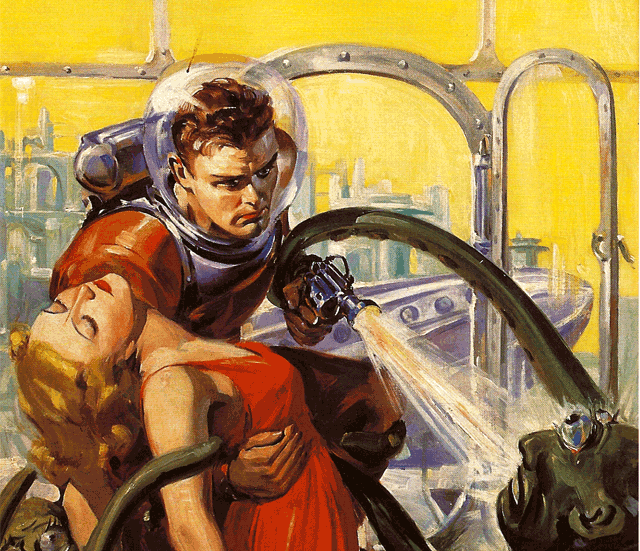Before we begin:
When a reader in the current era thinks of science fiction, images of space travel, dystopian futures, and intricate parallel universes often come to mind. It is a genre that has inspired some of the most innovative and compelling stories, including Isaac Asimov’s “Foundation” trilogy and Ursula K. Le Guin’s “The Dispossessed.” On the other hand, many people are probably unaware of the fact that the roots of science fiction as a popular genre may be traced back to a medium that is frequently underestimated: pulp magazines.
The Increasing Popularity of Pulp Magazines
The word “pulp” originates from the low-cost paper with a pulpy consistency that these publications were produced on. This is in contrast to the “glossies,” or mainstream magazines, which were printed on paper of a higher grade. Pulp magazines were popular in the past because they were inexpensive, simple to obtain, and contained a wide variety of genres, such as romance, adventure, and mystery. However, most importantly, they were the origin of the genre of fiction that we today refer to as science fiction.
An Area Reserved for Investigation
Authors had a lot of room to try new things in the pulp publications that were available. Because they were considered a “lowbrow” media, writers had more leeway to explore themes that were deemed controversial or absurd. This openness led to the creation of what was then called “scientifiction,” which was a forerunner to modern science fiction during the 1920s and 1930s, the golden age of pulp magazines. Magazines such as Hugo Gernsback’s “Amazing Stories,” which was first published in 1926, were able to profit from the growing interest of the general public in science and the future.
Legendary Figures from the Field
The names of some of the most famous science fiction authors were first made public through their work published in the pages of trashy magazines and newspapers sold at newsstands. For instance, Isaac Asimov, Robert A. Heinlein, and Arthur C. Clarke, who are collectively known as the “Big Three” of science fiction, all got their starts writing for pulp publications at some point in their careers. Their earlier works were published in serial form in journals such as “Astounding Science Fiction,” which played a significant role in developing the science fiction genre into a medium that placed a premium on scientific plausibility and accuracy.
The Point of Confluence Between Creativity and Progress
Not only did pulp science fiction have an effect on literature, but it also had a significant bearing on science and the development of new ideas. The public’s imagination was captivated by ideas such as robots, flying automobiles, and space travel, which in turn inspired a new generation of scientists and engineers. In addition, the beginnings of fandom occurred during the pulp era, with the first science fiction conventions taking place in the late 1930s and the publication of fanzines.
Making the Move to the Mainstream
By the 1950s, television and comic books had begun to overtake pulp magazines as the most popular form of entertainment. Despite this, the basis had been built; science fiction had discovered its voice, and it had found its audience. As the genre evolved from pulp to books, then movies, and finally television series, it maintained its ability to interest audiences by posing concerns about humanity, ethics, and the future.
The final word
It is impossible to exaggerate the significance of the role that pulp magazines had in the development of science fiction as a respectable and significant genre. They served as a proving ground for novel concepts, a stage for up-and-coming writers, and a driving force behind innovative developments. Pulp magazines, with their low prices and easy accessibility, were vital in popularizing science fiction and paving the way for the genre’s subsequent development as an essential component of contemporary culture.
